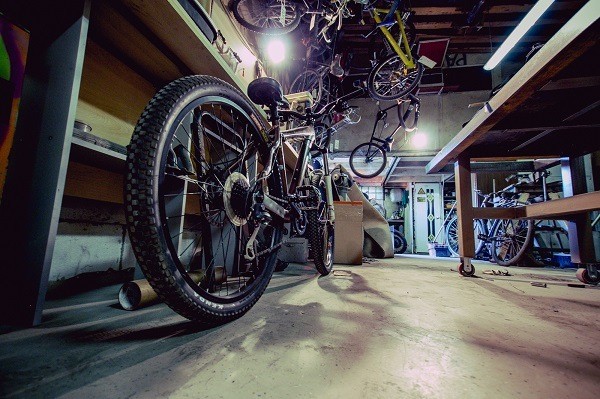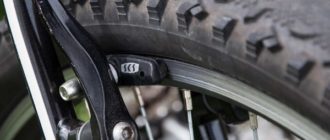As life shows, most cyclists, when the first frost arrives, simply put the bike away from sight and forget about it until spring arrives. Why don’t we preserve it, guys? A bicycle is the same machinery, it’s a complicated machine made up of different systems that work together to make it incredibly fun. If you start the season not with a ride, and with an overhaul, then the problem is probably not in the bike, but in your irresponsibility. So do not slack off, and closely engaged in the preservation of the bike for the winter. There is nothing complicated here – just carefully go through all the details of the bike and competently perform the work. We will definitely tell you how to do everything correctly, but now let’s talk about why it is necessary to preserve bikes, what will happen if you once again forget about this case.
The importance of canning your bike
What happens to a woman if she doesn’t get enough attention and care? That’s right – it “breaks”, resulting in a sparkling brainwashing and complete mincemeat in the relationship, and after that you still have to spend money on gifts to make up for your guilt. About the same is the case with any technique, whether it’s a food processor or a mountain bike. If you do not pay attention to it in time, then you are waiting for a fairy-tale repair, which is fraught with not only material and time losses, but also exhausted nerves. Do you need it?
Oil seals, tires, derailleurs, bike chains, cables and even frames – time spares nothing and no one. Having left the bike to its fate in winter, you risk to get a very unpleasant surprise in spring in the form of cracked rubber parts and small cobwebs on the once shiny frame. Why tempt fate unnecessarily if you can spend a couple of hours to properly preserve your bike and send it to the winter with a clear conscience? It is obvious: a few months tires will surely lose their tires, cables will be loose and the chain will be stretched. In addition, temperature changes and high humidity leads to rust on the chain and bearings, and a hard frost certainly does not spare the carbon frame, leaving you “hello” in the form of small but very ugly cracks.
Proper preservation of a bicycle consists of several steps, which in their totality are aimed at preparing the bicycle for inactivity in the period of cold and bad weather. The main goal is to keep all parts and mechanisms from corrosion and other destructive processes.
How to keep parts susceptible to cold
Cyclists can be divided into three categories:
- Fashionists: they ride simply because ZOH has become a fashionable trend, and hipsters have done their job (concern for the environment, saving money and blah-blah-blah).
- Pragmatists: they drive because it is really profitable, practical and convenient (you can easily go out of town, when every other inhabitant of the metropolis for the second hour living in a traffic jam).
- Fans: these are avid cyclists who consider the bike not just an iron horse, but also a loyal friend, with whom it is not terrible to go through fire, water and brass pipes.
Accordingly, each category of cyclist has a different attitude toward the bike. Some just put away the two-wheeled vehicle for the winter, believing that nothing terrible will happen to it, and someone with special tenderness and care checks every millimeter of the frame and manually cleans the chain from sand and dirt.
The most caring bike owners know that it will certainly reciprocate and hypersensitivity at the beginning of the next season. Therefore, let’s tell you about the ways in which you can protect the susceptible to the cold parts. What are we talking about? Basically, these are the elements and mechanisms of the bike that do not like sudden changes in temperature and frost. Plastic, rubber, electronics, painted elements – it is advisable to remove all this and send it to a warm room for wintering. The navigator, bike saddle, gear shifters will not take up much space in the closet or on the shelf, so it is best to keep them there until the arrival of spring. This also applies to bicycle tires: if the bike will stand, severe frost will certainly leave its mark on the wheels. It is better to hang the transport or think twice and still find a suitable place for wintering. And now proceed directly to the preservation of the bike, which can be divided into three stages.
Washing, drying and lubrication
The big job starts with a general washing. The bike frame, chain and sprockets, bearings and seals – the whole bike needs to be thoroughly washed. You may not have realized it, but city dirt contains specific impurities that certainly don’t make it an ideal mix for preservation. Once again, we remind you: wash your bike with household and especially industrial cleaners – you’ll just kill the bike. But do not wash it, too: otherwise you start the season with a rusty frame. It’s enough to wipe the frame with a damp rag and manually clean some elements of the sand and dirt.
At the same time, pay attention to the state of the transmission and other systems. When the teeth of the stars are “eaten up” by intensive loads and aggressive riding, it is better to replace them immediately with new ones. If you ever once in your life cleaned every link of a bicycle chain with an old toothbrush, you have no equal. If the chain could talk, it would certainly say “thank you” after you go over it, thoroughly cleaning each link and lubricating it with a drop of oil. Then again, if it’s frayed and badly sprained, it’s better to replace it and not suffer.
In fact, that’s all: all mechanisms, parts and elements of the bike should be washed, cleaned, dried and lubricated. As for the bicycle frame, there is also a way of preservation. If the paint is new and shiny, and you want to keep this dazzling beauty for the next season, you have to gently wash the frame with a mild detergent, rinse with water, well-dry, apply a thin layer of oil and cover the whole thing with food film.
Loosening the tight knots
Want your bike derailleurs to work flawlessly and respond accurately? Then remember to loosen the tension on the springs: This will extend the life of the unit as well as relieve the strain. To do this, simply move the bike chain to the smallest sprockets.
Wheels and tires
Here, much depends on how the bike is stored in winter. So, if the bike will be in a suspended state, it is better to pump up the wheels, so that the design of the bike itself does not deform the tires, but without fanaticism. The optimal pressure: 2 or 1.5 atm. If the bike will be stored standing up, the tires should be inflated to the stop. And from time to time it is necessary to check your faithful friend and to check the elasticity of the wheels. Separate advice for perfectionists: the tires can be treated with a special silicone spray.
A few words about electronics: flashlights, navigators, bicycle computers and other electronics that contain batteries should be removed from the bike and sent to winterize.
Advice from the “chefs” of bicycle cooking
Every business has its professionals who know a few secrets. We talked to guys who have been riding for a long time and have solid experience with different models of bicycles. And here’s what we were able to find out:
- The wheels of a bike that stands in the winter in the classic form, it is advisable to periodically pump up.
- If time permits, you can lubricate the tires with glycerin on the outside and inside – this will keep the rubber from drying out and cracking.
- It is better to send the bike for the winter in a hanging state: this will prevent deformation of the wheels.
In fact, all these manipulations do not take much time. But the result is obvious: the bike will please its owner with the coordinated work of all mechanisms and systems.
Conclusion
Any technique needs proper care. It is not for nothing that manufacturers calculate a certain duration of the warranty period: this indicator largely depends on the owner’s attitude towards the technique. It is clear that the remaining dirt on the bike literally for a couple of months will corrode the chain so that the beginning of the new season will be marked by the purchase of a new transmission. Why waste your money if you can can cannibalize your bike and enjoy a comfortable ride?










